23-Year-Old American Founded a Company With Self-Driving Car Tech That's Giving Tesla Some Competition
Collaboration with Luminar allows us to learn more about its promising technologies
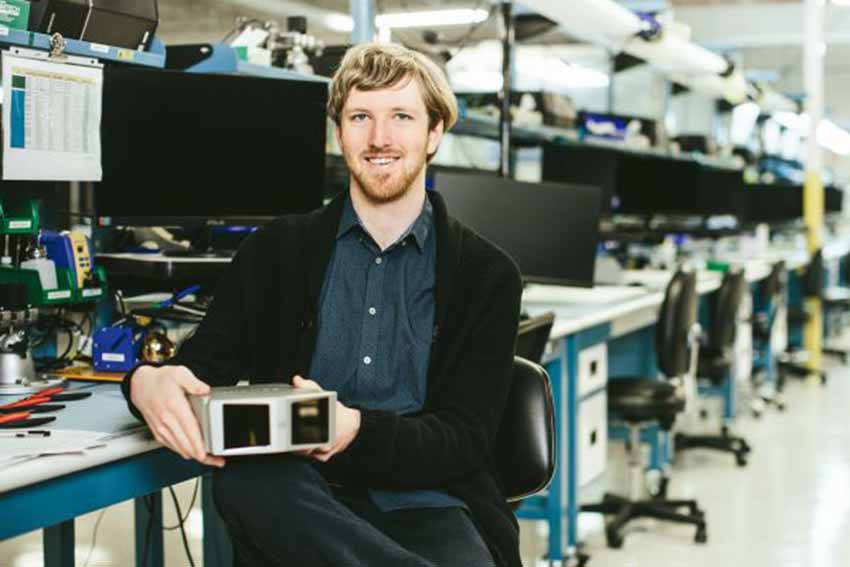
Austin Russell, CEO, Luminar Photo Credit : CNBC
At 23, Austin Russell is remarkably young to be a CEO. But he's starting to find his way as an executive.
That’s because the young entrepreneur founded his self-driving car technology company Luminar more than half a decade ago when he was just 17 and still in high school.
Of course, Russell has always been a prodigy.
At an age when most toddlers are still in diapers, Russell memorized the periodic table of elements.
“I guess, I did memorize the periodic table I think I was around 2 or so,” Russell bashfully tells CNBC Make It. “I was just obsessed with learning certain things ... just independently learning and understanding a lot of new types of scientific fields, among other things.”
By age 10 or 11, Russell was writing software, he says. Russell once programmed the firmware in his Nintendo DS to turn it into a cellphone because his parents wouldn't buy him one.
“It did actually work,” he says.
By his teen years, Russell's interests got even more sophisticated.
“Eventually [I] ended up evolving into building computing systems, supercomputers, other things on hardware, and then ultimately evolving into lasers, optics and photonics those kind of things,” says Russell. Photonics is the science of creating and "harnessing" light and other energy whose base unit is the photon, according to The National Center for Optics and Photonics Education.
Russell realized there was "a whole new frontier" in photonics and he wanted to be part of it.
That's when Russell (at 14 or 15) start working with lidar, which stands for "light detection and ranging." Lidar is a method of using lasers to measure the distance of objects. It can be used to create a 3D map of an environment in real time, so it's a leading technology that enables self-driving cars to identify and navigate around obstacles. Lidar is at the heart of Russell's start-up; Luminar develops its own lidar sensor technology for autonomous vehicles.
Though Russell founded Luminar in high school, the business got its real start after he dropped out of college at 18.
He briefly attended Stanford University to study applied physics but felt compelled to focus on Luminar. So Russell applied for and was awarded the famous Thiel Fellowship. PayPal co-founder and early Facebook investor Peter Thiel pays students $100,000 to ditch college and work on their start-ups for two years.
Russell's parents were “a little skeptical" of the decision, he says. But he had built a research lab in his parents’ garage in Southern California by the time he was 11, so they knew they had a prodigy on their hands.
And Russell himself has no regrets.
“Dropping out is definitely right for some people and can work really well if you're very clear on what you want to do and how you want to go about doing it. And clear about just life goals in general,” says Russell.
“A lot of it is just about timing,” adds Russell. With the speed at which things like hardware and photonics advance, if he had waited until he graduated to build his company, it might have been too late.
During the fellowship is when Russell's work with light went from “theoretical research” to a “real-world business,” the young entrepreneur says.
The technology Luminar is building, lidar sensors, are the industry standard for autonomous cars. There are many other companies working to build lidar sensors, including Velodyne, Quanergy and Innoviz. Companies using Velodyne technology include Ford, Volvo and Mercedes-Benz. Innoviz's technology is being used by Beijing-based automotive electronic products company HiRain and BMW, among others.
But Luminar says it is aiming to make better quality lidar sensors than the rest of the competition. To do this, Luminar builds all of its own components lasers, receivers, scanning mechanisms and processing electronics as opposed to using “off-the-shelf” parts, according to the company. Luminar reports that its sensors “see” at 50 times better resolution and have a tenfold range compared with industry competitors (thanks to the use of different materials and light frequencies).
CEO of @luminartech on competition: everyone else is using off-the-shelf components, we are creating something new from the ground up. #Disruptor50 @SquawkCNBC pic.twitter.com/TrjBXYkZyA
— CNBC Disruptors (@CNBCDisruptors) May 22, 2018
So far, Luminar which is headquartered in Palo Alto, California, with manufacturing in Orlando, Florida has raised more than $36 million in funding at an undisclosed valuation and has more than 400 employees. The start-up was in stealth mode for the first five years of its existence to keep details of the work it was doing privately. It publicly launched in April 2017.
That September, Luminar announced a partnership with the Toyota Research Institute, the research arm of its namesake automaker parent company.
“We moved swiftly and early to adopt the Luminar platform into our fleet, and as a result, we’re rapidly advancing our program,” James Kuffner, chief technology officer of the Toyota Research Institute, said in a written statement at the time. “The level of data fidelity and range is unlike anything we’ve seen and is essential to be able to develop and deliver the most advanced automated driving systems.”
In June, Luminar announced investment from and a collaboration with Volvo.
“LiDAR is a key technology for enabling autonomous cars to navigate safely in complex traffic environments and at higher speeds,” said Henrik Green, senior vice president of research and development at Volvo Cars, in a statement at the time. “Our collaboration with Luminar allows us to learn more about its promising technologies and takes Volvo Cars one step further to the highly autonomous cars of the future.” (Indeed, Volvo said it will offer a true self-driving car by 2021.)
Excited to announce our work with, and investment from @volvocars! They are the first partner to tap our newly launched Perception Dev Platform. https://t.co/G4jRh3BUhF pic.twitter.com/15PlhJwg1B
— Luminar (@luminartech) June 14, 2018
A spokesperson for Luminar says the company has two other high-caliber partners, but declines to name them.
Luminar started shipping early iterations of its lidar sensors to its partners over a year ago for the companies to use in self-driving test vehicles. The latest version of its sensor was announced and shipped in April. Luminar declines to disclose the cost of its sensors, as well as company revenue. According to a spokesperson, the “deals with the four major partners are not insignificant.”
In the making: our sensing technology that will power the future of autonomous vehicles pic.twitter.com/n1glzV7Uxd
— Luminar (@luminartech) April 12, 2018
However, there is one very famous critic of the kind of tech that Luminar makes Elon Musk. Rather than including lidar sensors for navigation, Teslas (which are built with "full self-driving hardware") have a combination of cameras, radar and ultrasonics.
“In my view, it is a crutch,” Musk said of lidar sensors during Tesla’s February investor conference call. "Now, perhaps I am wrong, in which case I will look like a fool, but I am quite certain that I am not.”
Russell is aware of Musk's thoughts on lidar technology but is not swayed.
“Well, I would just say, in general, that there are two different types of systems. So if you want a car that works great as an assisted driving system, that requires constant human input and maybe follows a couple lanes on a road, you can actually you don't need lidar at all for that. You can do something very well with just cameras and radar. But the challenge comes down to solving that last 1 percent of all these different edge cases,” says Russell, referring to irregular incidents like a child suddenly running into the street.
“Not only do you need lidar, we need way better lidar, if we want to be able to solve this problem at all,” says Russell.
Musk’s notion of building autonomous vehicles without lidar sensors is unrealistic, says Russell, because the alternative computer vision is not close to being ready for implementation.
“I mean in theory you could actually have an autonomous car that doesn't need any other type of sensors or just a couple cameras like human eyes looking ahead, you know, but the reality is is that we are nowhere close to that from just a computer vision standpoint.”
According to its website, all Tesla vehicles produced in its factory "have the hardware needed for full self-driving capability at a safety level substantially greater than that of a human driver," but additional software (and regulatory approval) is required before the cars will be able to drive autonomously, Tesla says on its website. The electric car company did not respond to an email from CNBC Make It seeking comment on Russell's remarks.
Much surrounding the future of self-driving cars still remains to be seen.
Indeed, launching a company in a nascent industry was hard, says Russell. In the early days, it could be a “big challenge” to get people to take him seriously not just because of his young age, but because he was pitching a product for an industry that wouldn't fully exist for several years.
But Russell earned respect by aligning himself with the right people and proving his idea worked, he says.
“The reality is that you just have to find the right supporters, the right people that ultimately believe in your vision and run with that,” Russell tells CNBC Make It.
“You have to start somewhere with things, and it's just about gaining momentum on that. You have to build the right proof of concept, prototypes, other things in hardware or software or whatever type of technology you’re creating and just go from there and ultimately build up that sense of credibility.”
Being a Thiel fellow gave Russell credibility, he says, as does his co-founder, Jason Eichenholz, who has worked in the photonics industry for 25 years and is the inventor of 10 different patents in the space.
Having purpose is also important, says Russell. This is a desire to increase safety on the road by implementing his lidar sensor technology at scale.
"That's what inspires me to be able to see this through,” Russell tells CNBC Make it. “It's important to have some type of higher driver or passion or something to ensure that you keep going because it's always going to be a little bit of a roller coaster.”
In fact, Russell turns to the words of his critic: “To quote Elon, he's said that being an entrepreneur is like chewing glass while staring into an abyss,” says Russell, “which I'd agree with in a lot of respects, but that's at the difficult times. At the great times, it can be rewarding like nothing else.
“It's a lot of blood, sweat and tears, a lot of all-nighters," says Russell, who often works 100 hours a week. "But, yeah, it's worked out for us in the end.”
This article originally appeared on : CNBC
-

Indigenous people march in Brazil to demand land demarcation
2024-04-24 -
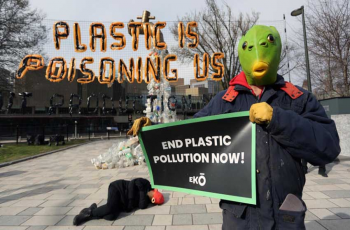
Talks on global plastic treaty begin in Canada
2024-04-24 -

Colombian court recognizes environmental refugees
2024-04-24 -

Asia hit hardest by climate and weather disasters last year, says UN
2024-04-23 -
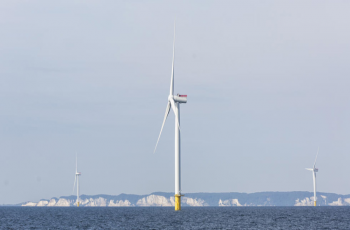
Denmark launches its biggest offshore wind farm tender
2024-04-22 -
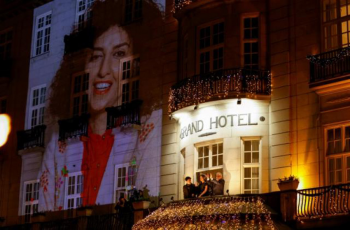
Nobel laureate urges Iranians to protest 'war against women'
2024-04-22 -

'Human-induced' climate change behind deadly Sahel heatwave: study
2024-04-21 -

Moldovan youth is more than ready to join the EU
2024-04-18 -
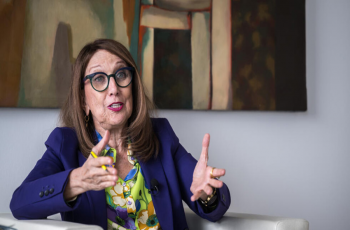
UN says solutions exist to rapidly ease debt burden of poor nations
2024-04-18 -

Climate impacts set to cut 2050 global GDP by nearly a fifth
2024-04-18
